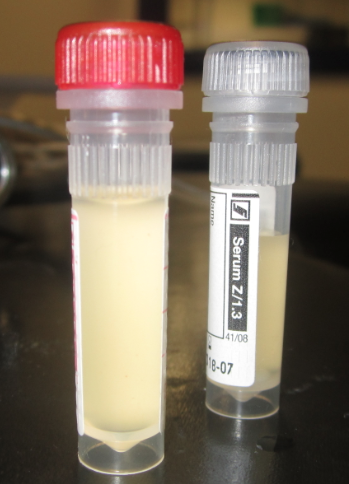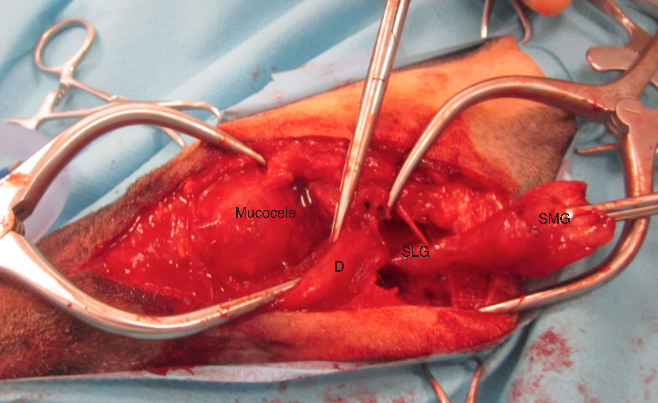Categories
Dyspnoea in a Dog – Quiz
Soft Tissue Surgery: Unusual Cause of Dyspnoea in a Dog
History
“Sid” is a small terrier who presented with upper respiratory tract dyspnoea six weeks after a severe dog attack which had resulted in multiple puncture wounds to his neck. These wounds had been left to heal by second intention.
Clinical Examination
Clinical examination revealed a large sublingual swelling with dorsal displacement of the tongue (fig 1) and a right sided fluctuant submandibular swelling,
fig 1
Aspiration
Aspiration of the swelling yielded viscus slightly straw coloured fluid (figure 2).
Questions:
Scroll down the page or click each question to reveal the answer
- What is your diagnosis?
- What are the treatment options for this condition?
- What anaesthetic concerns may you have in this case?
- What is the prognosis following treatment?
Answers:
- This is a salivary mucocele or “sialocele” of traumatic origin. A sublingual sialocele (seen here) is often called a “ranula” back to questions >>
- Although these swellings can be temporarily alleviated with either simple drainage or marsupialization of the ranula, the only definitive treatment is excision of the offending salivary gland tissue usually through either a ventral or ventrolateral approach. A ventral approach gives best exposure (fig 3). The submandibular (SMG) and sublingual (SLG) glands are intimately associated with each other and are usually removed together. Their combined ducts course dorsal to Digastricus (D) and it is important to continue dissection beyond this point, usually to the level of the lingual nerve rostrally. The affected duct can usually be seen entering the sialocele cavity and this confirms that the correct glands have been removed. The sialocele itself does not have to be dissected out but can be simply drained at the time of surgery back to questions >>
- The main anaesthetic concern in this case is the unusual presentation i.e. that of dyspnoea. This may indicate major sublingual and possibly pharyngeal swelling that could lead to difficulty intubating following induction. A temporary tracheotomy may be necessary if intubation is not possible. In this case, we immediately lanced and suctioned the sublingual swelling after induction and this allowed normal intubation to be performed back to questions >>
- The prognosis following removal of the offending salivary tissue is excellent. Some sialoceles can form secondary to neoplasia of the salivary glands but this is unusual. Most cases are idiopathic and certain breeds (GSD, poodles, dachshunds) are over-represented implying a genetic influence. This case was thought to be secondary to crush injury of the submandibular and sublingual salivary complex from the original fight wounds and this was consistent with the histopathology results. Sid has since made a full recovery back to questions >>
by Tim Charlesworth
If you think you have a suitable case that you would like to refer, or if you would like any more information, please contact Tim Charlesworth MA VetMB DSAS(ST) MRCVS RCVS Recognised Specialist in Small Animal Surgery (Soft Tissue) on 01793 528341 or e-mail: Eastcott Veterinary Referrals



